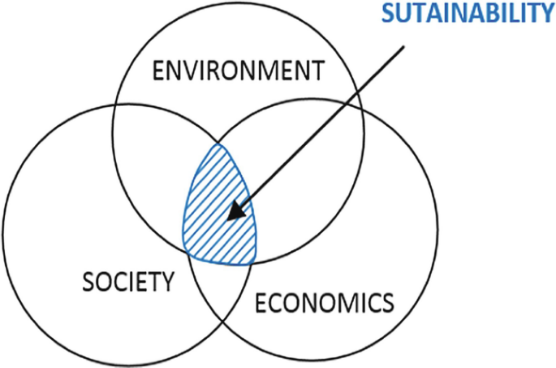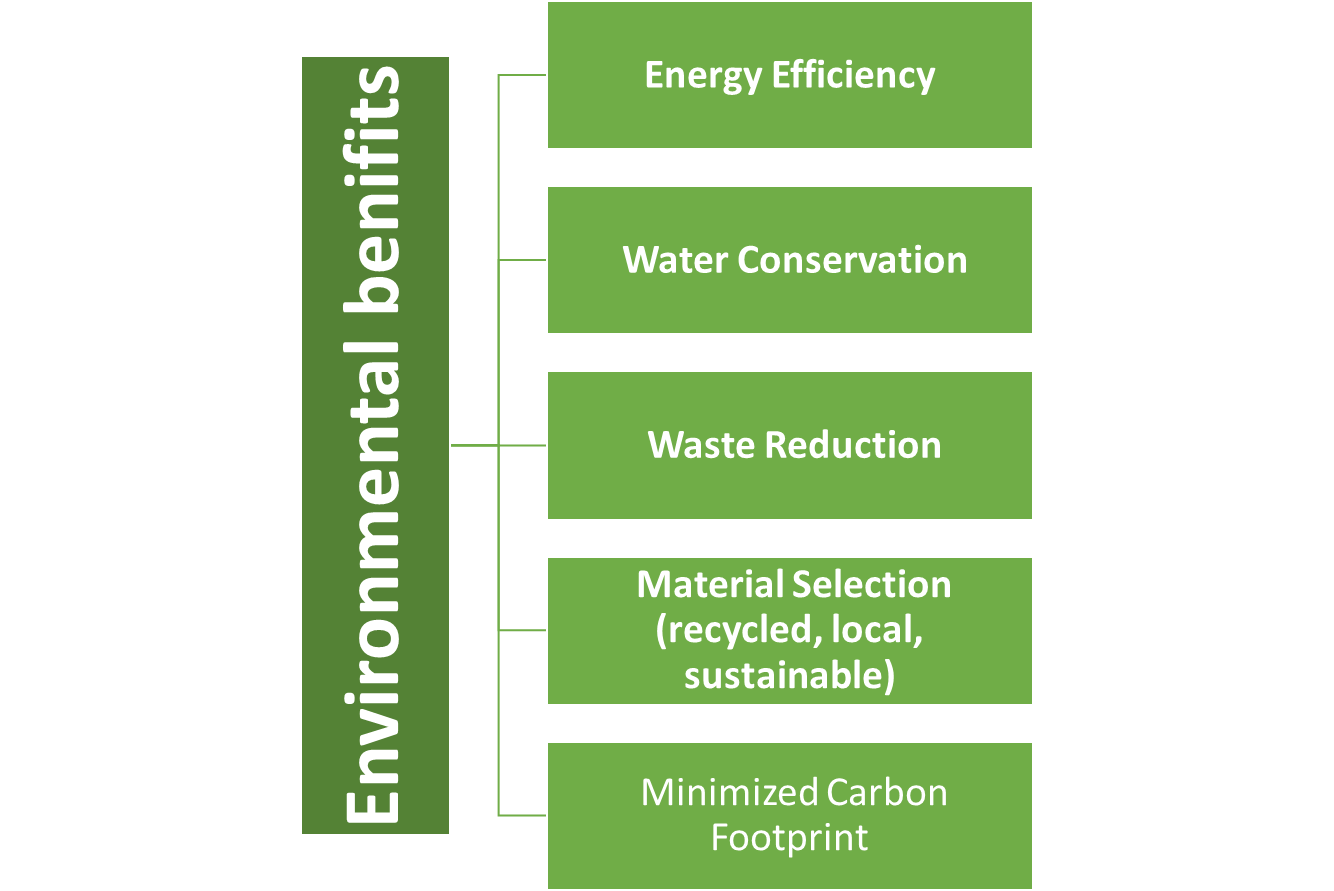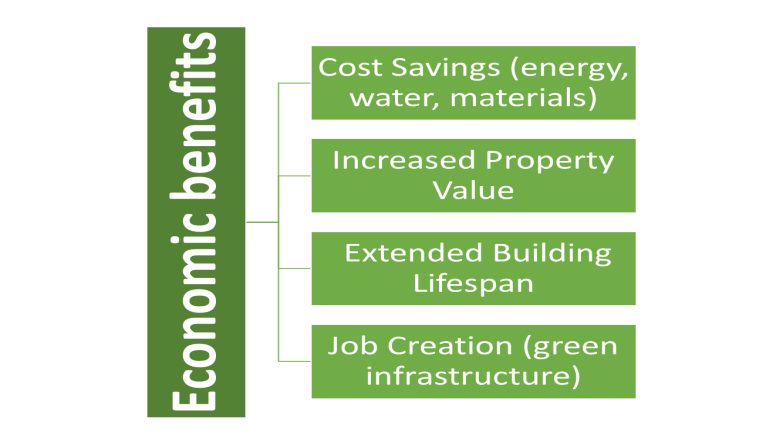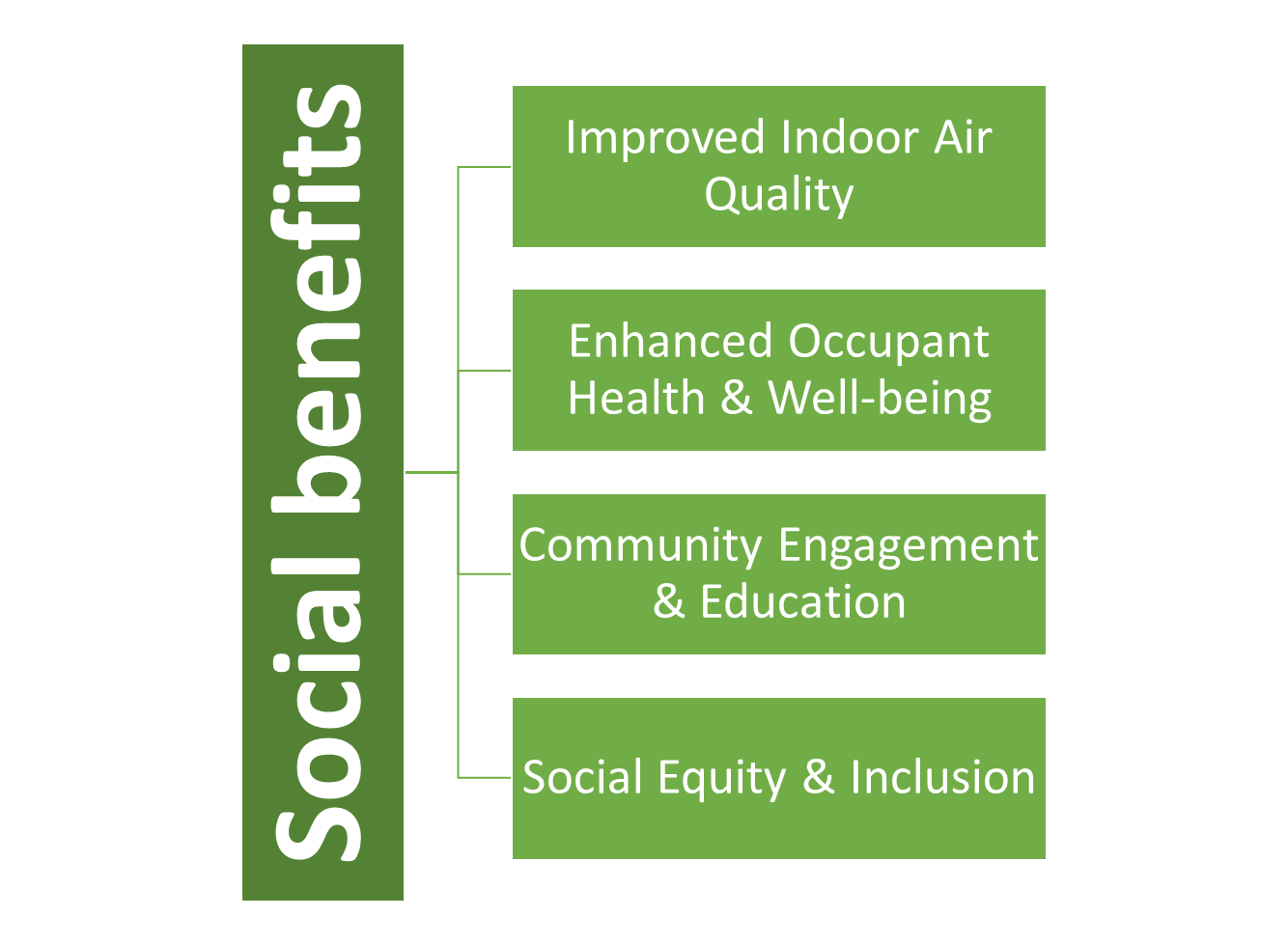Ijraset Journal For Research in Applied Science and Engineering Technology
- Home / Ijraset
- On This Page
- Abstract
- Introduction
- Conclusion
- References
- Copyright
The Role of Sustainable Construction Management in Enhancing Environmental, Economic, and Social Outcomes: A Comprehensive Analysis of Benefits in Modern Building Practices
Authors: Susil Kumar Mishara
DOI Link: https://doi.org/10.22214/ijraset.2024.64344
Certificate: View Certificate
Abstract
Sustainability in construction projects is a topic that is widely studied and discussed today from the academic, research and industrial fields. In this research, sustainable development is understood as that that manages to satisfy present needs without assuming the future risk of a generation, in compliance with the requirements of that current binding need. This development has been seen from the perspective of the sustainable triad, its application being imperative in the economic, environmental and social dimensions, which is widely accepted today Now, sustainability in construction projects has evolved towards the integration of management of the project. The research concerned the well implementation of sustainable practices in construction. The outcome of the study is to understand much about sustainability because the people-those being the clients, government agencies, and construction companies-are not clear about it. They do not follow the sustainability rules properly and the laws and building codes are quite weak.
Introduction
I. INTRODUCTION
The construction industry is one of the main pillars of economic development globally, it has always been under scrutiny for its significant environmental impacts: resource consumption, generation of waste, and greenhouse gas emissions. It thus gives reason enough to shift from the prevailing paradigm towards more sustainable practices. Sustainable construction management, which takes into account environmentally, socially and economically relevant considerations at every stage of a project's life cycle, becomes a critical solution.
The paper discusses the effectiveness of sustainable construction practices. Also focus on a range of strategies and techniques that can be followed to reduce the industry's footprint on the environment, improve social equity, and maximize the economic benefits. It addresses issues and opportunities related to sustainable construction and, in doing so, provides information that might be valuable to all practitioners, policymakers, and researchers who strive for a more sustainable future for the built environment.
Here we discuss the key sustainable principles and practices that can be integrated into the various stages of the construction project lifecycle i.e. planning, design, construction, operation, and maintenance.
II. DISCUSSION
The meaning behind the term ‘sustainability’ remains highly contested. There is little consensus on its meaning outside the mostly commonly quoted definition from the Brundtland report: ‘development that meets the needs of the present without compromising the ability of future generations to meet their needs’ (WCED 1987). The term sustainable construction refers to the process of constructing a structure that is environmentally sound and resource-efficient throughout the buildings life. Sustainable construction includes a recyclable aspect from design to construction and then up to the demolition of its existence in any resource use. Sustainable construction includes a recyclable aspect from design to construction and then up to the demolition of its existence in any resource use.

Figure 1, Sustainability
More people equals more infrastructures, houses, and buildings. This eventually means more use of energy, air, lands, and waters. In totality, the whole lifecycle of a construction project will produce more amounts of wastes. the urban waste management system will face an enormous challenge managing waste produced from construction projects. Effective practicing of sustainable activities will only be ensured through commitment and collective effort among all parties engaged in a supply chain, meaning they act as parts of the whole system and also influence the outcomes.

Figure 2
Sustainable building Designing to produce buildings with a low embodied energy and less harmful emissions. The method involves making use of materials that are reusable, renewable, recyclable and repairable, besides employing more intelligent application of water as well as power. By embracing sustainable building practices, the demand for professionals like builders, designers and consultants will be higher but also opportunities for improved marketing and promotions within the field. The project manager to develop some necessary sustainability construction techniques for implementation is useful in obtaining many environmental, social and economic benefits.
A. Environmental Benefits
The embodied energy and emissions can be lessened: Using sustainable design helps to reduce the environmental impacts associated with building materials and construction methods. Sustainable construction The use of recovered, recyclable and repairable resources causes a greater sustainability in the consumption of finite resources. Water and energy savings Sustainable practices can reduce the amount of water and energy that the building consumes by a lot.
 Figure 3
Figure 3
Both intergenerational development and intergenerational equity are trustworthy markers of a project's feasibility for all stakeholders engaged in its advancement. While intergenerational justice is necessary for long-term progress, intergenerational equality is essential for long-term sustainability. It is advisable to promote the utilization of renewable energy and resources while discouraging the use of non-renewable ones. The extraction and use of minerals and non-renewable fossil fuels for industry frequently results in the formation of hazardous deposits and greenhouse gasses like carbon dioxide. in order to attain sustainability, a project's material procurement strategy should take into account the quantity of energy consumed, the amount of pollution produced.
B. Economic Benefits
More market Demand-Sustainable buildings are often highly sought-after by potential buyers or tenants, which translates to more work for professionals in the sustainable design and construction fields.
Improved marketing and promotional opportunities – sustainable construction can be used as a highly marketable brand for the businesses engaged to it.

Figure 4
C. Social Benefits
It helps in improving community health as healthier buildings limit exposure to pollutants and encourage an active lifestyle. Sustainable living practices can lead to a higher standard of living, both at work and at home. By driving the adoption of these practices, sustainable construction can create jobs in associated industries, including renewable energy and green building materials. Sustainable construction projects can improve the reputation of a developer, contractor or community.

Figure 5
Sustainable construction causes no harm rather favours environment and economy as well and society too go benefited from both of these win-win conditions. By using principles of sustainability when planning, building and operating the buildings we can achieve a more sustainable/resilient future.
Sustainable construction, though replete with benefits, does have one major drawback: the upfront cost tends to be higher when put beside standard building practices. While in its immediate application net costs do not often ascend, a complete life-cycle cost model is necessary to capture some of the areas where operational savings are realized coast effectively over the long run. In addition, there are many obstacles to implementing sustainable construction in the sector. Barriers include: a knowledge gap and skills shortage among professionals, along with the issue that many benefits are difficult to quantify; for example, improved occupant health, comfort and productivity or reduced pollutant emissions or landfill waste. Green buildings are also known as disruptive or high-performance design; while Sustainable Buildings turn the waste and materials circular.
Local byelaws are important for helping determine sustainable direction in construction practices through overseeing construction operations within a given jurisdiction. These are often the enactment of municipal or local governments, which articulate that buildings should be planned, constructed, and maintained in such a way as to assure social, economic, and environmental sustainability goals. A few examples of building materials, construction methods, and energy efficiency impose minimum requirements according to local bylaws. By mandating the use of materials that are sustainable, such as local purchases or products containing recycled content, byelaws can significantly minimize the environmental impact of a project. Standards for energy efficiency in topics that include matters related to insulation and the integration of renewable energy also contribute to achieving low carbon levels, and they are likely to save money in terms of running cost. For example, municipal by-laws may be used to significantly strengthen support for the sustainable development of urban areas. Byelaws can advance the creation of compact walkable environments that diminish the need for private transport which improves services for sustainable transport. Other benefits of local by-laws include regulation of land-use patterns, density, and building heights that help protect natural ecosystems and improve life quality for the locals.
But a number of variables affect how well municipal bylaws promote environmentally friendly building methods. First, for them to be obeyed, byelaws must be precise and brief. Moreover, they must be periodically revised to introduce new technology and industry's best practices. Thirdly, for compliance and prevention of infractions, there is a need for powerful tools like imposition of fines and inspection.
Conclusion
To ensure a good project conclusion, holistic management of construction projects takes into account all project variables, including technical, financial, and social factors. This method places a strong emphasis on teamwork, communication, and the application of best practices in project management. It also takes the project\'s long-term sustainability and community effect into account. To guarantee that the project stays on track and produces the anticipated outcomes, vision, and objectives, effective holistic management calls for a strong project team, well-defined goals and objectives, and frequent monitoring and evaluation. Local byelaws have become one of the most effective ways of promoting more sustainable forms of construction practice because bylaws specify the usage of particular materials, energy efficiency, and urban design. Thus, the creation of a more socially just, economically sustainable, and environmentally benign physical environment becomes possible. However, these policies must be clear, enforceable, and consonant with more general sustainability objectives to function effectively. The sustainability factors in building industry projects and carefully examines the body of prior research in this area. The main goal is to create project sustainability implementation standards that will be successful in upcoming building projects.
References
[1] A review on achieving sustainable construction waste management through application of 3R (reduction, reuse, recycling): A lifecycle approach. M Mohammed1, N Shafiq1, N A W Abdallah1, M Ayoub2 and A Haruna1 Published under licence by IOP Publishing Ltd [2] Brundtland, G. H. (1987). What is sustainable development. Our Common Future, 8(9) [3] Gandhi, N. M., Das, Selladurai, V., & Santhi, P. (2006). Unsustainable development to sustainable development: A conceptual model. Management of Environmental Quality: An International Journal. Gilbert Silvius, A. J., Schipper, R., & Nedeski, S. (2013). Sustainability in Project Management: Reality bites. PM World J, 1–14 [4] Lauren Bradley Robichaud and Vittal S. AnantatmulaAuthor Affiliations, Greening Project Management Practices for Sustainable Construction ,Publication: Journal of Management in Engineering,Volume 27, Issue 1 [5] N J Cely-Calixto, Romel Jesús Gallardo Amaya,Carolina Mejíathe Construction project management through a holistic view of sustainability,14 Jun 2024 [6] Ofori, G. (2000). Challenges of construction industries in developing countries: Lessons from various countries. 2nd International Conference on Construction in Developing Countries: Challenges Facing the Construction Industry in Developing Countries Gaborone November, 5(24), 15–17. [7] Ogunmakinde, O. E., Egbelakin, T., Sher, W., Omotayo, T., & Ogunnusi, M. (2023). Establishing the limitations of sustainable construction in developing countries: a systematic literature review using PRISMA. Smart and Sustainable Built Environment. [8] Prof.KARTHIK S, Sustainable construction management system Indian Scientific Journal Of Research In... (Indospace Publications) - Vol. 08, Is,28 May 2024 [9] Rajeev, A., Pati, R. K., Padhi, S. S., & Govindan, K. (2017). Evolution of sustainability in supply chain management: A literature review. Journal of Cleaner Production, 162, 299–314. [10] Rathi, A. K. A. (2017). Evaluation of project-level environmental impact assessment and SWOT analysis of EIA process in India. Environmental Impact Assessment Review, 67(4), 421–426. [11] Y?lmaz, M., & Bak??, A. (2015). Sustainability in construction sector. Procedia-Social and Behavioral Sciences, 195, 2253–2262
Copyright
Copyright © 2024 Susil Kumar Mishara. This is an open access article distributed under the Creative Commons Attribution License, which permits unrestricted use, distribution, and reproduction in any medium, provided the original work is properly cited.

Download Paper
Paper Id : IJRASET64344
Publish Date : 2024-09-25
ISSN : 2321-9653
Publisher Name : IJRASET
DOI Link : Click Here
 Submit Paper Online
Submit Paper Online

